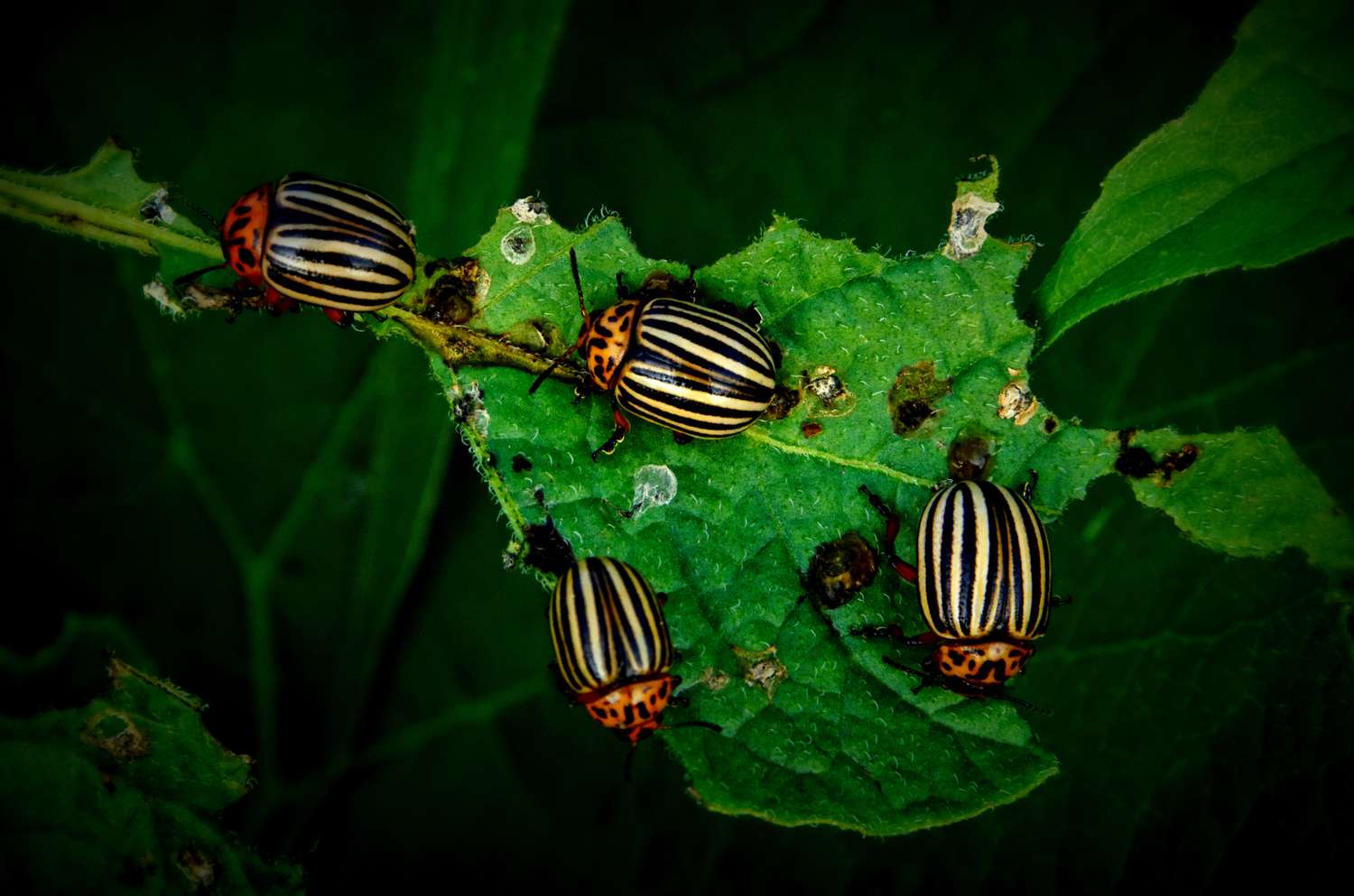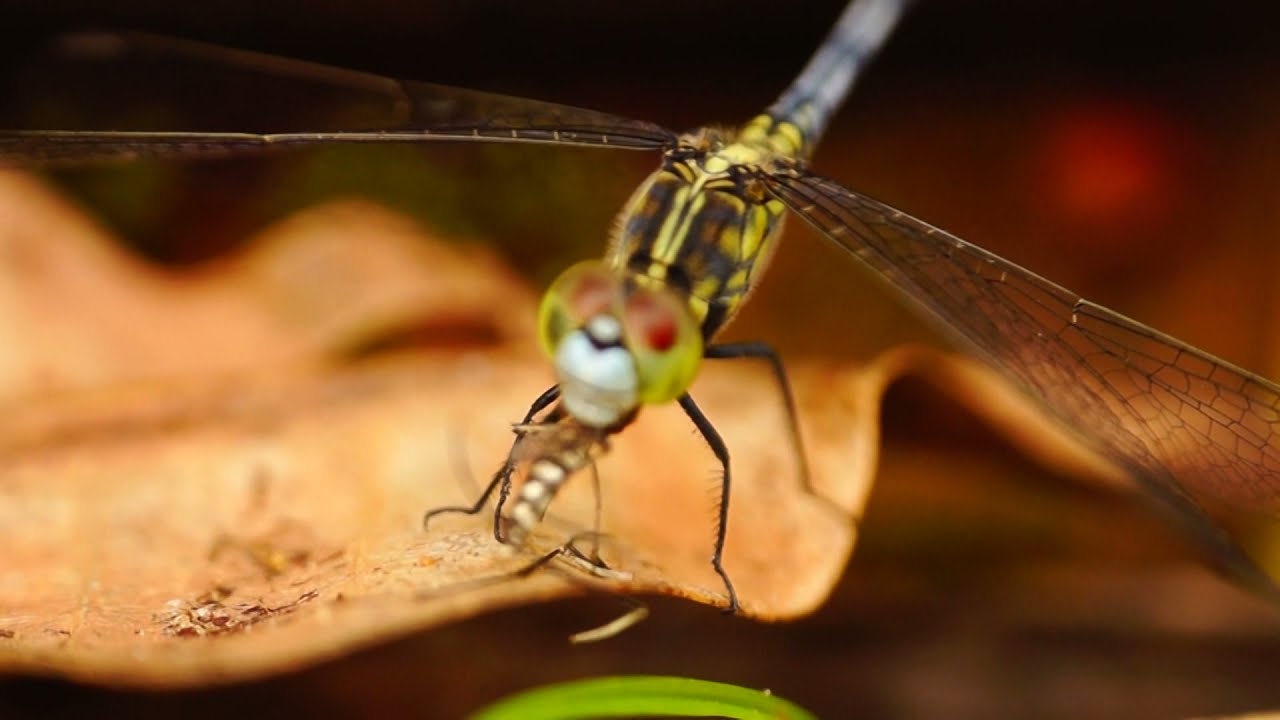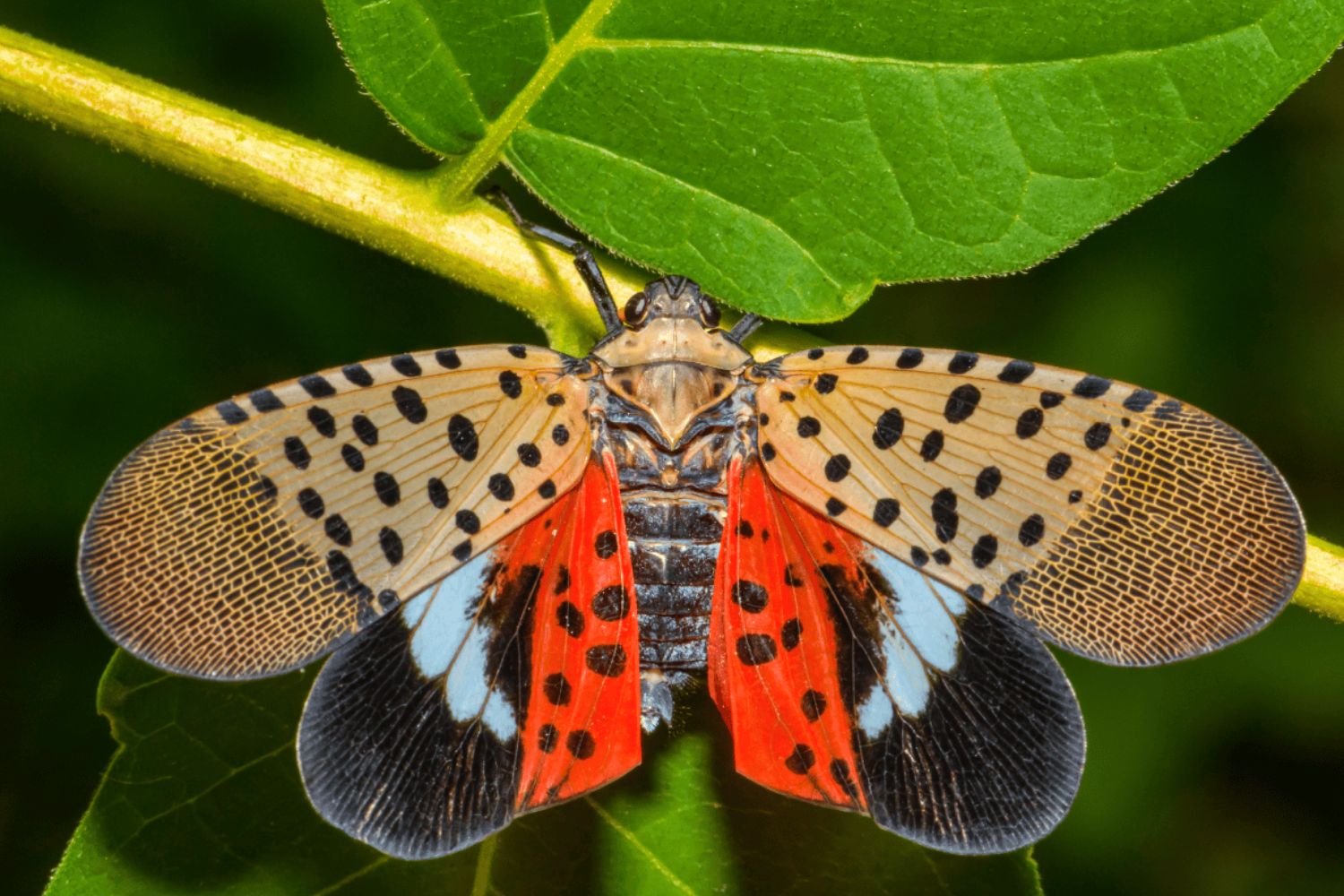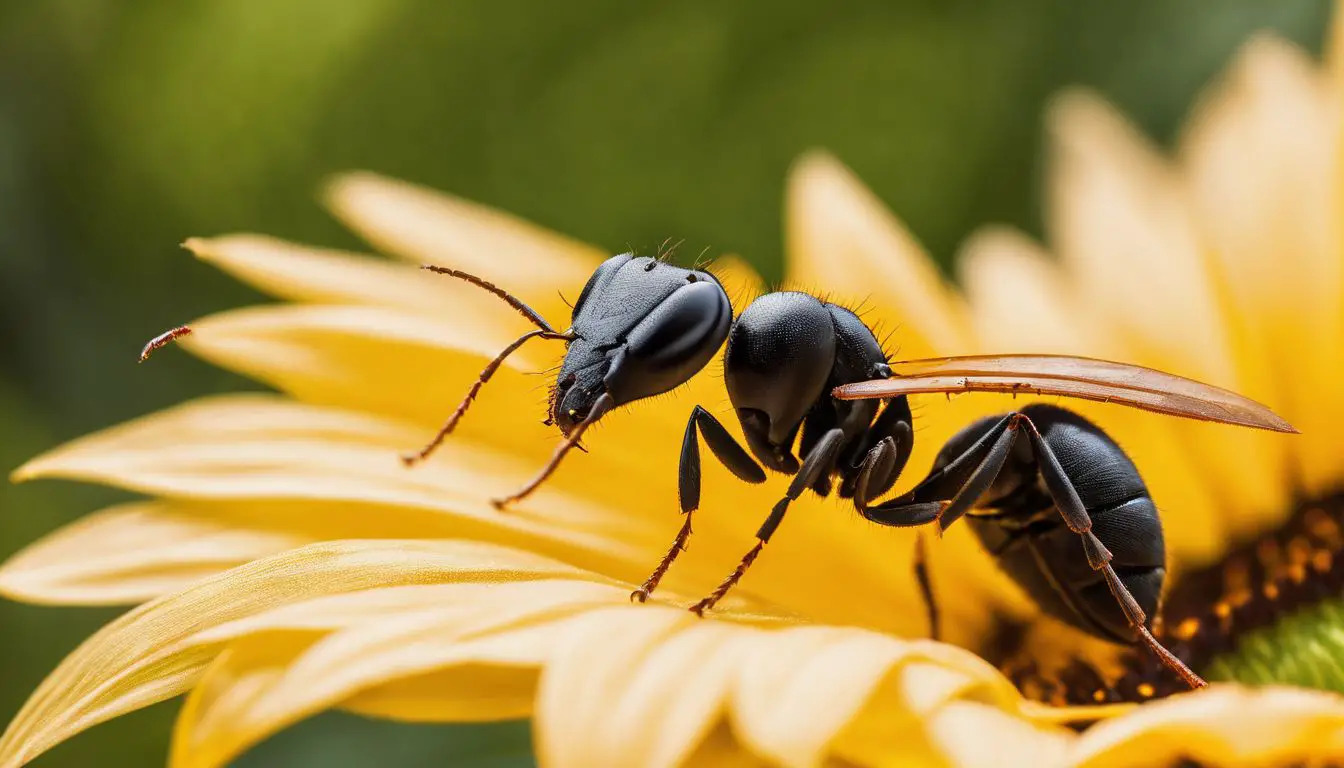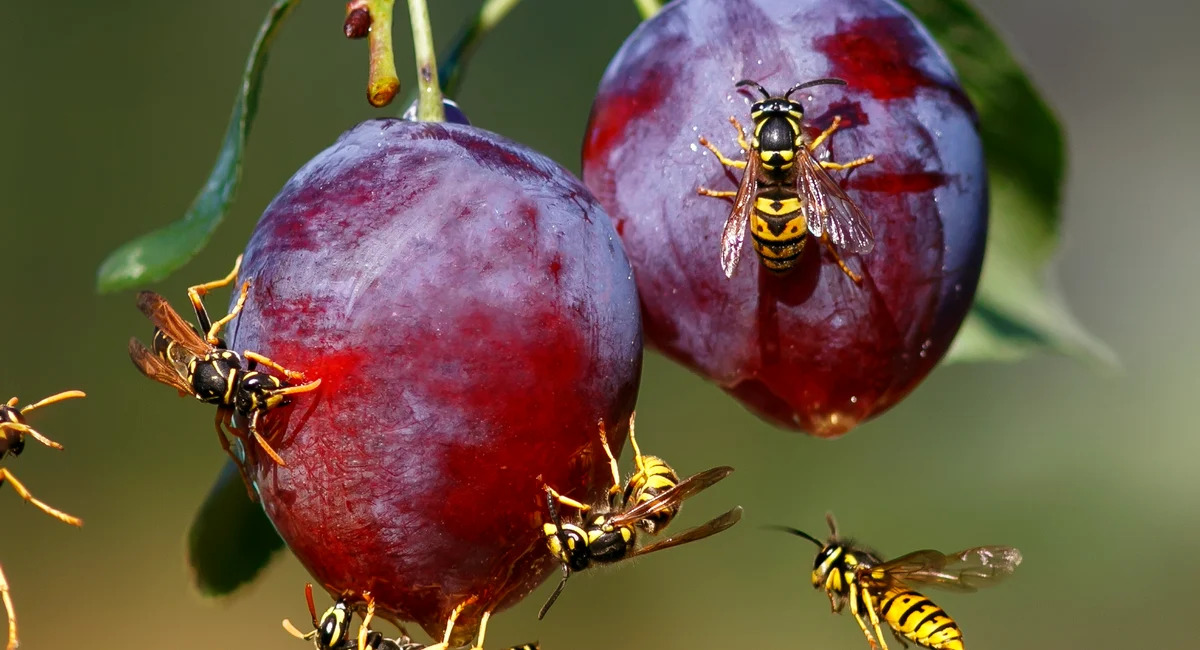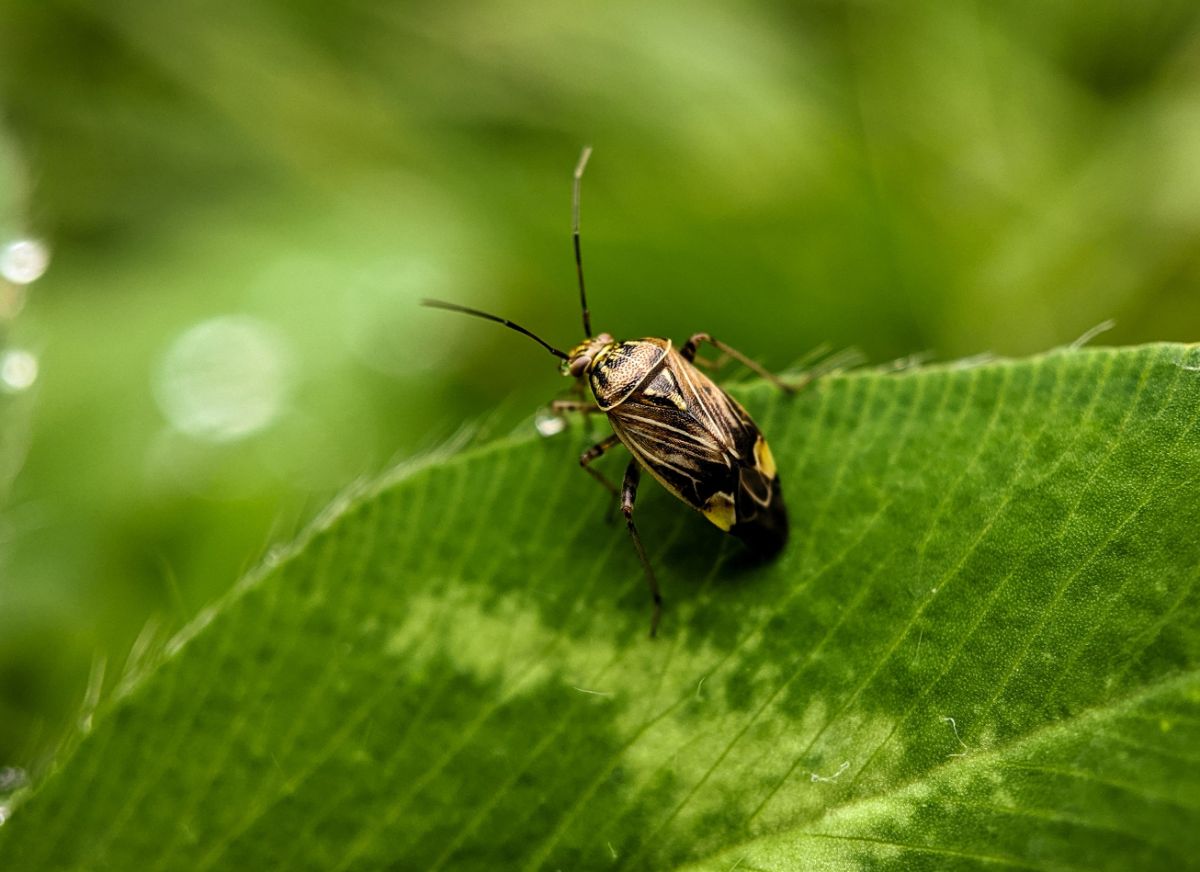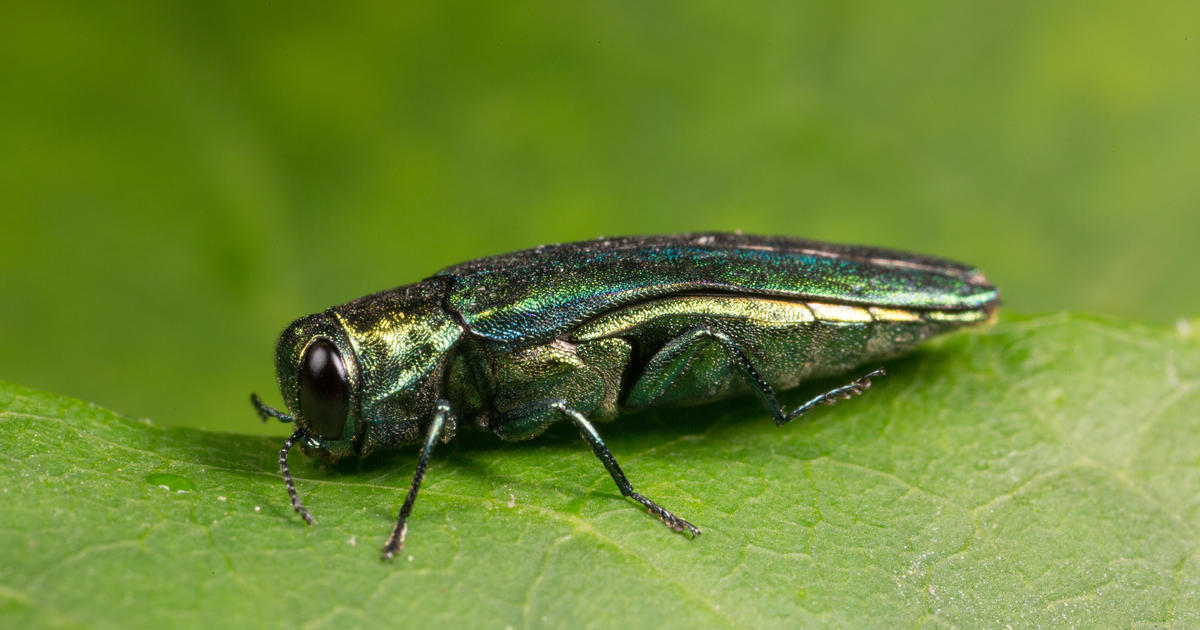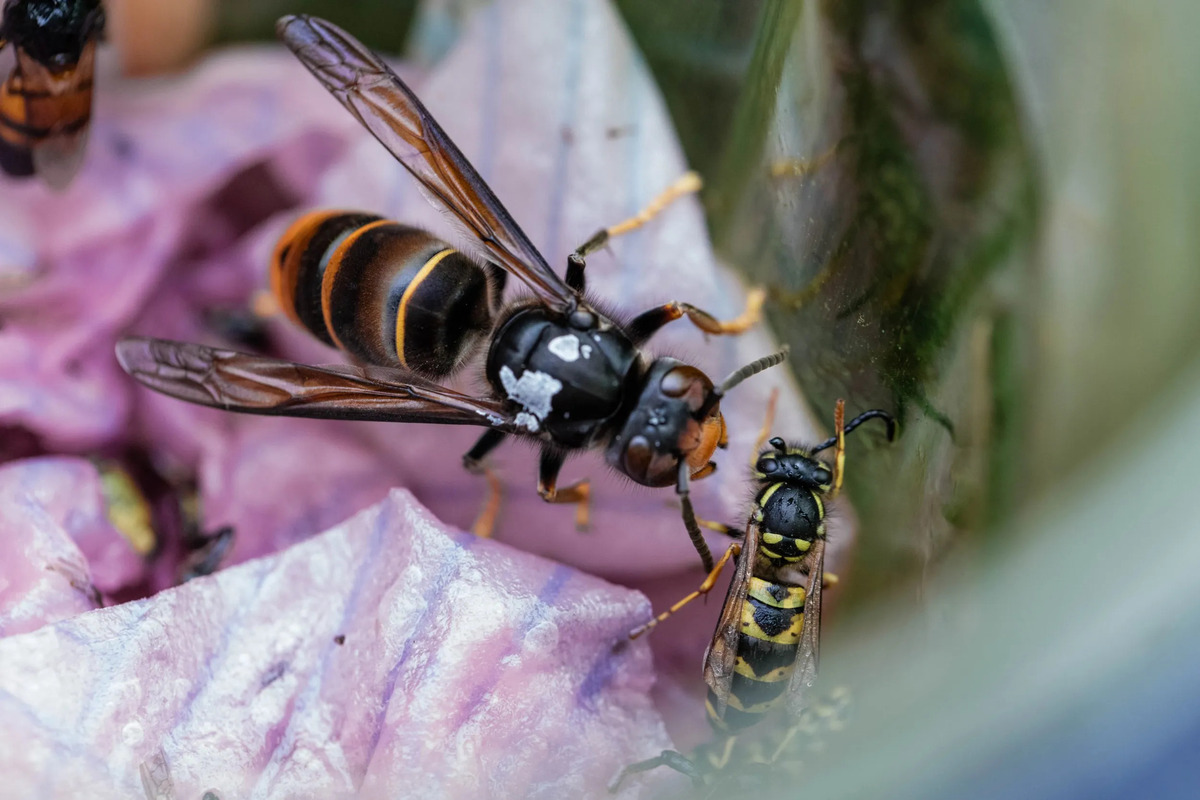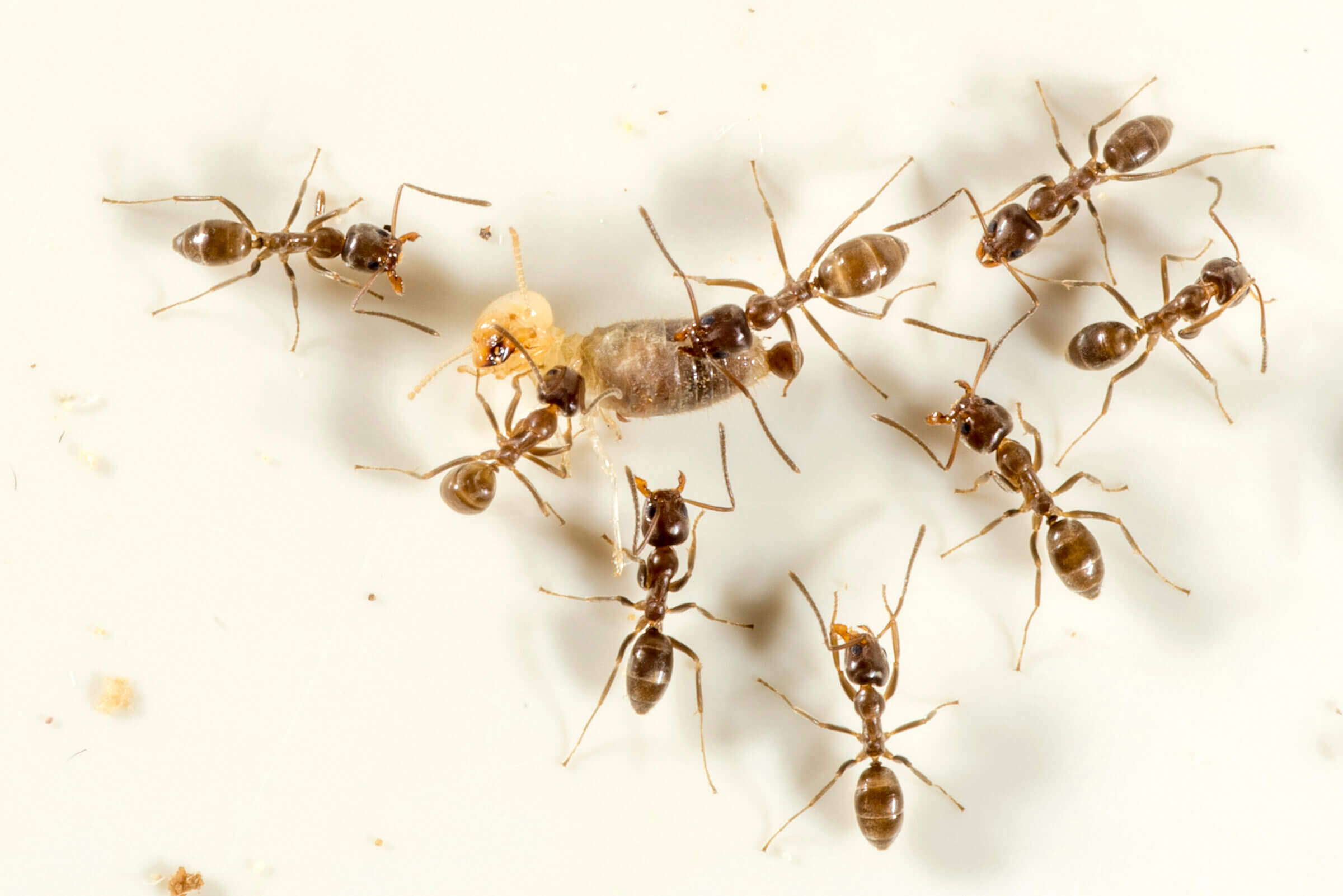Home>Gardening News and Trends>Latest News>What Insects Eat Mint Leaves
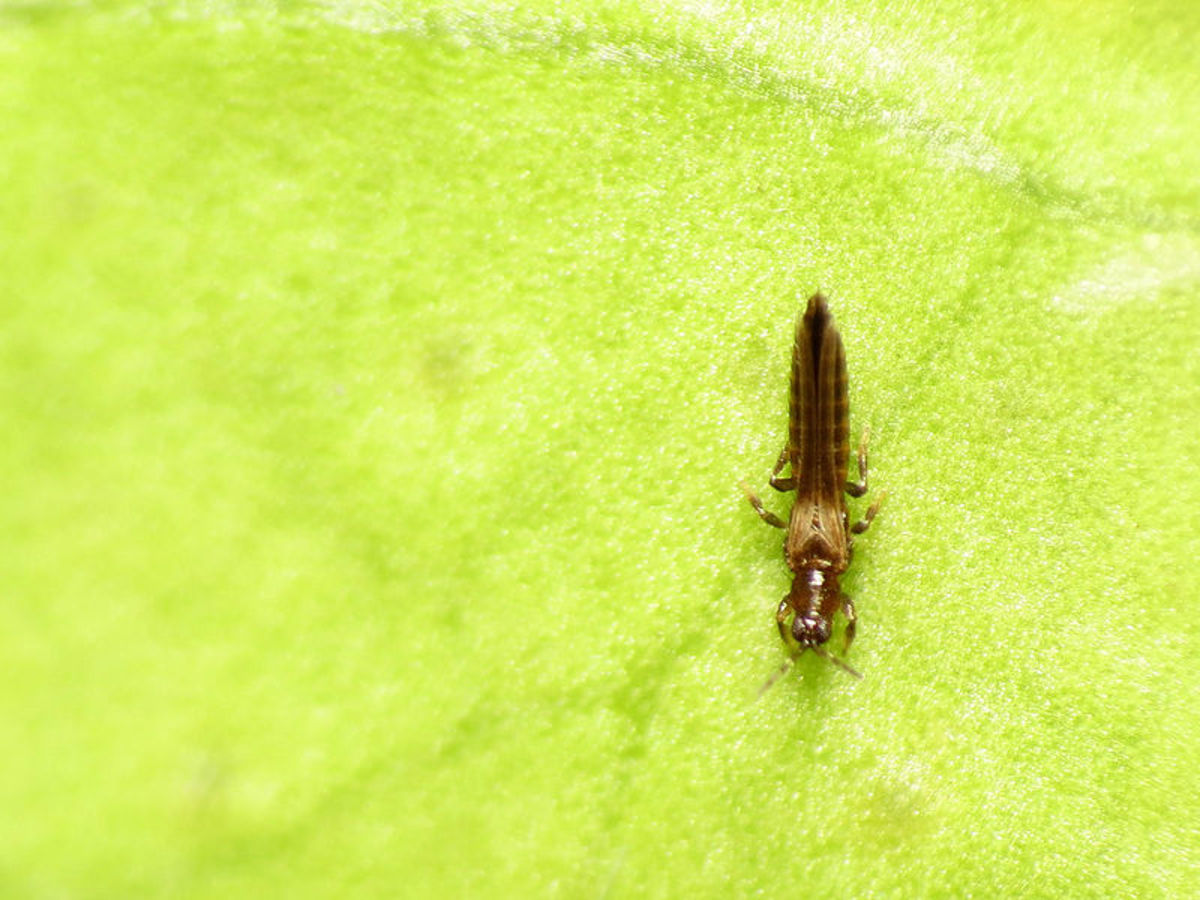

Latest News
What Insects Eat Mint Leaves
Modified: January 22, 2024
Discover the latest news on what insects eat mint leaves and how to protect your mint plants. Explore effective strategies and preventive measures.
(Many of the links in this article redirect to a specific reviewed product. Your purchase of these products through affiliate links helps to generate commission for Chicagolandgardening.com, at no extra cost. Learn more)
Table of Contents
Introduction
Mint leaves, with their refreshing aroma and distinct flavor, have been widely used for culinary purposes and as herbal remedies for ages. These versatile plants not only add a delightful twist to various dishes and beverages but also offer a range of health benefits. However, just like any other plant, mint leaves are vulnerable to pests, including insects, that feed on their foliage. This article explores the world of insects that have a taste for mint leaves, the damage they can cause, and natural ways to prevent infestations.
Mint plants belong to the Mentha genus and are part of the Lamiaceae (mint) family. They are known for their fast growth and ability to spread vigorously, making them a popular choice for home gardens and culinary enthusiasts. There are several species of mint, including peppermint, spearmint, and chocolate mint, each with its own distinct flavor profile.
Mint leaves contain essential oils, such as menthol, which give them their characteristic fragrance and taste. These oils also act as natural insect repellents, making mint plants less appealing to many pests. However, some insects have developed a taste for mint and can cause damage to the leaves, affecting the plant’s overall health and productivity.
Understanding which insects feed on mint leaves is essential for effective pest management and plant care. By identifying the common culprits, gardeners can take necessary steps to protect their mint plants and ensure a healthy harvest. Additionally, exploring natural ways to prevent insect infestation can provide a sustainable and chemical-free solution to keep mint plants thriving.
In the following sections, we will delve into the insect species that feed on mint leaves, the damage they can cause, and ways to naturally prevent infestation. By the end of this article, you will be equipped with the knowledge needed to protect your mint plants and enjoy an abundant supply of fresh, flavorful leaves.
Benefits of Mint Leaves
Mint leaves offer more than just a refreshing taste and aroma. They are packed with beneficial compounds that promote overall health and well-being. Here are some of the key benefits of mint leaves:
- Improved Digestion: Mint leaves have been traditionally used to aid digestion. They can help relieve indigestion, bloating, and stomach cramps. Mint leaves contain menthol, which has antispasmodic properties that help soothe the muscles of the gastrointestinal tract, promoting smoother digestion.
- Reduced Inflammation: Mint leaves possess anti-inflammatory properties, making them beneficial for alleviating inflammation in the body. The natural compounds found in mint leaves, such as rosmarinic acid, have been shown to help reduce inflammation and provide relief from conditions like arthritis and inflammatory bowel disease.
- Relief from Respiratory Issues: The menthol content in mint leaves can help relieve respiratory congestion and symptoms of respiratory conditions like asthma and allergies. Inhaling the steam from hot water infused with mint leaves can provide immediate relief from nasal congestion and sinus pressure.
- Stress and Anxiety Relief: Mint leaves have a calming effect on the mind and body, making them useful for reducing stress and anxiety. The soothing aroma of mint can help relax the mind, while the menthol can help relax tense muscles, providing a sense of relaxation and tranquility.
- Antimicrobial Properties: Mint leaves possess antimicrobial properties that can help combat harmful bacteria and fungi. Chewing on mint leaves or using mint-infused mouthwash can freshen breath and inhibit the growth of bacteria that cause dental plaque and cavities.
- Weight Management: Mint leaves may aid in weight management due to their ability to stimulate digestion, support healthy metabolism, and reduce cravings. Adding mint leaves to dishes or beverages can enhance flavor without adding excessive calories.
These are just a few of the many benefits that mint leaves offer. Incorporating mint leaves into your diet or using mint-infused products can help improve your overall health and well-being. However, to fully enjoy these benefits, it is important to ensure that your mint plants are free from insect infestation and damage, which we will discuss in the following sections.
Insect Species That Feed on Mint Leaves
Mint leaves may be aromatic and flavorful, but unfortunately, they also attract a variety of insect pests that have a voracious appetite for their foliage. Here are some common insect species that feed on mint leaves:
- Mint Aphids: These tiny insects are commonly found on the undersides of mint leaves. Mint aphids suck on the sap of the plant, causing the leaves to curl, yellow, and ultimately die. They reproduce rapidly, forming dense colonies that can quickly infest your mint plants.
- Mint Flea Beetles: As the name suggests, these beetles feed on the leaves of mint plants and can severely damage the foliage. They create small holes in the leaves, giving them a “shot-hole” appearance. Mint flea beetles are particularly active during the spring and early summer months.
- Mint Moths: Mint moths are small, nocturnal insects that lay their eggs on mint plants. The larvae, commonly known as mint worms, feed on the leaves, leaving behind skeletonized foliage. If left unchecked, mint moth infestations can lead to significant damage to the plant.
- Spider Mites: These tiny pests are not insects, but rather arachnids. Spider mites often infest mint plants, especially in dry and dusty conditions. They suck the sap from the leaves, causing them to turn yellow and eventually dry out. Spider mite infestations can spread quickly, leading to stunted growth and reduced mint production.
- Sawfly Larvae: Sawfly larvae are caterpillar-like pests that feed on mint leaves. They have a voracious appetite and can quickly defoliate mint plants if not controlled. Sawfly larvae may appear in different colors, ranging from green to yellow or even brown, depending on the species.
These are just a few examples of the insect species that can pose a threat to your mint plants. If you notice signs of insect feeding or infestation, it is crucial to take immediate action to prevent further damage and protect the health of your mint crop. In the following sections, we will explore natural ways to prevent insect infestations and safeguard your mint plants.
Damage Caused by Insect Feeding
Insects that feed on mint leaves can cause significant damage to your plants, impacting their health and productivity. Understanding the potential damage caused by insect feeding is crucial for effective pest management and preserving the vitality of your mint plants.
Here are some of the common types of damage caused by insect feeding:
- Leaf Damage: Insects like mint aphids and mint flea beetles can chew small holes in the leaves, resulting in a “shot-hole” appearance. This damage not only affects the aesthetic value of the plant but can also hinder its photosynthesis and overall growth.
- Leaf Curling and Yellowing: Mint aphids and spider mites suck the sap from the leaves, causing them to curl and turn yellow. This can lead to stunted growth, reduced leaf production, and even eventual death of the plant if the infestation is severe.
- Skeletonized Foliage: Mint moth larvae, also known as mint worms, feed on the leaves, leaving behind skeletonized foliage. This damage can reduce the plant’s ability to perform photosynthesis and negatively impact its overall vigor.
- Stunted Growth: Heavy infestations of insect pests can cause stunted growth in mint plants. The constant feeding and damage to the foliage can weaken the plants, resulting in reduced nutrient uptake and limited biomass accumulation.
- Spread of Diseases: Insect feeding can create entry points for pathogens, increasing the risk of disease transmission. When insects feed on the leaves, they can introduce bacteria, viruses, or fungi into the plant, leading to the development of various diseases that can further compromise the health of your mint plants.
It is important to regularly inspect your mint plants for signs of insect feeding and take necessary measures at the earliest indication of infestation. By promptly addressing the problem, you can minimize the damage and maintain the vitality of your mint crop.
Next, we will explore natural ways to prevent insect infestation and protect your mint plants from these damaging pests.
Natural Ways to Prevent Insect Infestation on Mint Plants
When it comes to protecting your mint plants from insect infestations, taking a proactive and natural approach is not only effective but also environmentally friendly. Here are some natural ways to prevent insect infestation and safeguard your mint plants:
- Companion Planting: Planting companion plants that repel insects can help deter pests from attacking your mint plants. Some beneficial companion plants for mint include marigolds, chamomile, lavender, and catnip. These plants emit scents that naturally repel insects, creating a protective barrier around your mint plants.
- Regular Inspections: Regularly inspecting your mint plants for signs of insect activity is crucial in catching infestations early on. Look for curled leaves, holes, or discolored foliage, as well as any visible presence of insects. Prompt action can prevent the infestation from spreading and causing further damage.
- Hand Picking: If you notice a few pests on your mint plants, you can manually remove them by hand. Wear gloves and carefully pick off the insects, dropping them into a bucket of soapy water to ensure they do not return to the plants. This method is especially effective for larger insects like caterpillars or beetles.
- Beneficial Insects: Introducing beneficial insects to your garden can help control pest populations naturally. Ladybugs, lacewings, and parasitic wasps are all beneficial insects that feed on common pests like aphids and caterpillars. You can attract these helpful bugs by planting flowers they are attracted to or purchasing beneficial insect eggs or larvae from garden suppliers.
- Organic Pest Control: If the infestation becomes severe and natural methods are not enough, consider using organic pest control options. Neem oil, an organic insecticide, can be sprayed on mint leaves to deter pests. Additionally, insecticidal soap made from natural ingredients can help control aphids and mites. Always follow the instructions on the product label and use organic options that are safe for edible crops.
- Maintaining Plant Health: A healthy mint plant is less attractive to pests. Ensure your mint plants receive adequate sunlight, water, and nutrients to promote vigorous growth. Avoid over-fertilizing, as this can attract pests. Prune any damaged or diseased leaves to prevent infestation from spreading.
By implementing these natural preventive measures and staying vigilant, you can create a pest-resistant environment for your mint plants. Remember, prevention is key in keeping insects at bay and maintaining the health and productivity of your mint garden.
Conclusion
Mint plants, with their refreshing aroma and culinary versatility, are not only a delight to have in your garden but also offer numerous health benefits. However, these plants are not immune to insect pests that can cause damage to their foliage and overall health. By understanding the insect species that feed on mint leaves, the damage they can cause, and implementing natural preventive measures, you can protect your mint plants and ensure a flourishing harvest.
Throughout this article, we explored the benefits of mint leaves, such as improved digestion, reduced inflammation, respiratory relief, stress relief, antimicrobial properties, and weight management support. Mint leaves truly encompass a natural powerhouse of wellness.
We also discussed several insect species that may target mint plants, including mint aphids, mint flea beetles, mint moths, spider mites, and sawfly larvae. These pests can cause various forms of damage, from leaf holes and curling to skeletonized foliage and stunted growth.
To prevent insect infestation, we introduced natural methods, such as companion planting, regular inspections, hand picking, beneficial insects, organic pest control, and maintaining overall plant health. These approaches not only help safeguard your mint plants but also promote an environmentally friendly and sustainable gardening practice.
In conclusion, understanding the insect pests that target mint leaves and taking proactive measures to prevent their infestation is vital for maintaining the health and productivity of your mint plants. By incorporating these natural preventive methods, you can enjoy an abundant supply of fresh and flavorful mint leaves while keeping harmful pests at bay.
